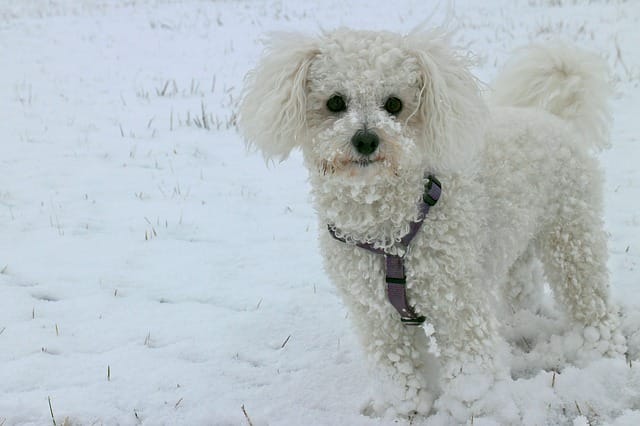
Walking your dog in the snow might be tough during the winter, as much as keeping cats out of the Christmas tree, especially with freezing temperatures, ice, and shorter days to deal with.
For those who enjoy walking dogs in the snow, you’ll need to understand these important safety guidelines and precautions.
Pooches enjoy the snow and are able to tolerate lower temperatures. Walking is also a wonderful way to stay in shape and healthy.
Nonetheless, before you go out for your winter strolls, there are a few important safety pointers you should know. Follow these helpful hints to make walking dogs in the snow more safe and enjoyable this season.
Here are what you should do to keep your dog safe in the winter:
1. Keep paws safe and secure.
Winter dog booties or rubber boots will keep ice particles and snow from forming between their toes and the pads of their paws by dashing through the snow.
To safeguard wet paws, use winter dog booties or rubber boots to prevent icy particles and snow from accumulating between their toes and the pads of their paws. We recommend using Breathable Dog Walking Shoes.
2. Wrap them up and keep them warm
Small dogs are particularly susceptible to chilly temperatures, especially those with short coats or insufficient body fat.
These include pups with limited coats and those who have little body fat. To keep them warm and prevent them from shivering on winter walks, wrap pups in a water-resistant coat or pullover. I
f you’re looking for ideas, the To safeguard wet paws, use winter dog booties or rubber boots to prevent icy particles and snow from accumulating between their toes and the pads of their paws.
We recommend using Vecomfy Fleece and Lining Extra Warm Dog Hoodie is a good option.
3. Keep dogs on a leash in the snow.
Dogs adore nothing more than to run around and frolic in the snow, but there are a few serious issues to consider.
In addition to slipping and falling, our excitable canines may walk into frozen lakes or pools of water and fall through the ice due to their recklessness.
When walking through the snow with dogs on a leash, it’s always a good idea to keep them on a short leash. The last thing you want is for your dog to run off with the leash still attached, exposing it to hypothermia or injury.
4. Dogs should not be allowed to consume antifreeze, salt, or any other hazardous substances.
Salt grit and antifreeze may also be used to melt ice on the ground, but if dogs ingest them, they can become seriously ill or even die.
Antifreeze, in particular, has a sweet flavor that attracts dogs, so avoid walking across areas with puddles of spilled-over antifreeze and rinse their paws if they step in the liquid.
5. Don’t let your dog eat the snow.
Although your dog may be tempted to munch on the beautiful snow, it might be harmful to their health.
It can lower body temperature, which can lead to severe hypothermia and other dangers such as sharp objects or hazardous chemicals, like melting salt.
6. Keep your dog from walking in the snow for too long a period of time.

If you have a set schedule, don’t walk your dog in the snow for too long. Frostbite, hypothermia, and other cold-air exposure risks will all be reduced if you follow this advice.
Also, watch for indications of nervousness, including whimpering, stopping, slowing down or excessive shivering.
If you detect any of these signs, go back indoors right away and dry the garments off fully with towels by the door.
Furthermore, dogs with certain health issues such as thyroid disease or chronic lung problems should have little to no exposure during winter walks. Always carry a flashlight with you when walking outdoors.
As days become shorter earlier in the year, having one is essential for seeing hazards on evening walks.
How long can I let my dog run around in the winter?
Most healthy medium or large dogs can walk for 30 minutes in temperatures above 20 degrees Fahrenheit during the cooler months, while smaller pups should ideally walk from 15 to 20 minutes if the temperature is between 20 and 32 degrees Fahrenheit.
It’s essential not to walk your dog when it’s below 0 degrees to avoid hypothermia.
It’s best to limit the time your pup spends outdoors during the coldest months. Under-dressed or unthrifty dogs should never be left outside for an extended period of time.
If you keep your dog outside, make sure there is a well-insulated doghouse with a door flap, hay or straw bedding, and a dish of water.
Conclusion
Although the cold weather can be dangerous for our dogs, with a little bit of preparation we can keep them safe and warm.
Just remember to keep them on a leash, avoid antifreeze and salt ingestion, and don’t let them walk in the snow for too long. By following these tips, you and your furry friend can have a safe and enjoyable winter season.


GIPHY App Key not set. Please check settings